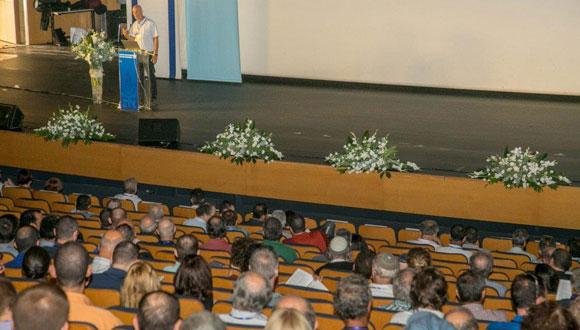Physics Colloquium: Stepping into the light with high power lasers and brilliant gamma beams
Prof. Sydney Gales, IPN Orsay
The Emilio Segre Distinguished Lectures in Physics of the Raymond and Beverly Sackler Foundation
Professor Judah M. Eisenberg Memorial Lecture
Abstract:
In the last decade the “laser world” is experiencing a “revolution” leading to a new paradigm in science and tech-nology. Laser intensities have increased by 6 orders of magnitude in the last few years. The power (1015 Watts) con-centrated in these extremely short burst of light (10-15s) are such that the laws of optics change in a fundamental way. This allows to access energy domains which have never been explored before. Based on these premisses, the European Strategic Forum for Research Infrastructures (ESFRI) has selected a proposal called the Extreme Light Infrastructure (ELI). The ELI will be built as a network of three complementary pillars in Hungary, Czech Republic and Romania at the frontier of laser technologies, funded by EU regional funds for a total investment of about 1 Billion euros (around 300 Meuros per site) in the time period 2012-2018.
The ELI-NP pillar (NP for nuclear physics) will develop a scientific program using two 10 PW (1015 W) lasers and a Compton back-scattering high-brilliance and intense low-energy gamma beam, a combination of laser and acceler-ator technology at the frontier of knowledge. The extreme high power density will be used for acceleration of elec-trons to many tens of GeVs within centimeter distances, which is currently only possible in kilometre-long accelera-tors. Another exciting perspective is to produce dense bunches of energetic protons and ions resulting from the inter-action of high power lasers with gas jets or thin foils of matter. These ions can be used to induce secondary reac-tions on specific materials leading to a new generation of radio isotopes for diagnostics in medicine or to be used for cancer treatment directly.
The unprecedented power density at ELI-NP will allow to study how matter/anti-matter is produced out of void within intense radiation fields. Such power densities are comparable to stellar environment conditions. The new brilliant gamma beam facility at ELI-NP will be used to study key nuclear reactions relevant to nucleosynthesis. One of them is the fusion reaction rate between alpha particles and carbon nuclei to produce oxygen (4He + 12C → 16O) which lies at the root of life on earth. Multi step reactions, such as fission-fusion, will be used to address questions regarding the formation of heavy elements in the universe. These extreme conditions will also lead to applications in imaging, gamma tomography, in the field of nuclear security regarding the management of sensitive nuclear materials or subjecting materials to intense radiation fields for space mission applications.
After a short introduction to high power laser science and of its development worldwide, the present status of the implementation of the ELI-NP facility as well as the new perspectives in Nuclear Physics and Astrophysics and their applications will be described. The impact of this emerging science will be illustrated through specific examples re-lated to health, energy and economical and educational implications of this Large Scale Facility in the host country.
Event Organizer: Dr. Ishay Pomerantz


